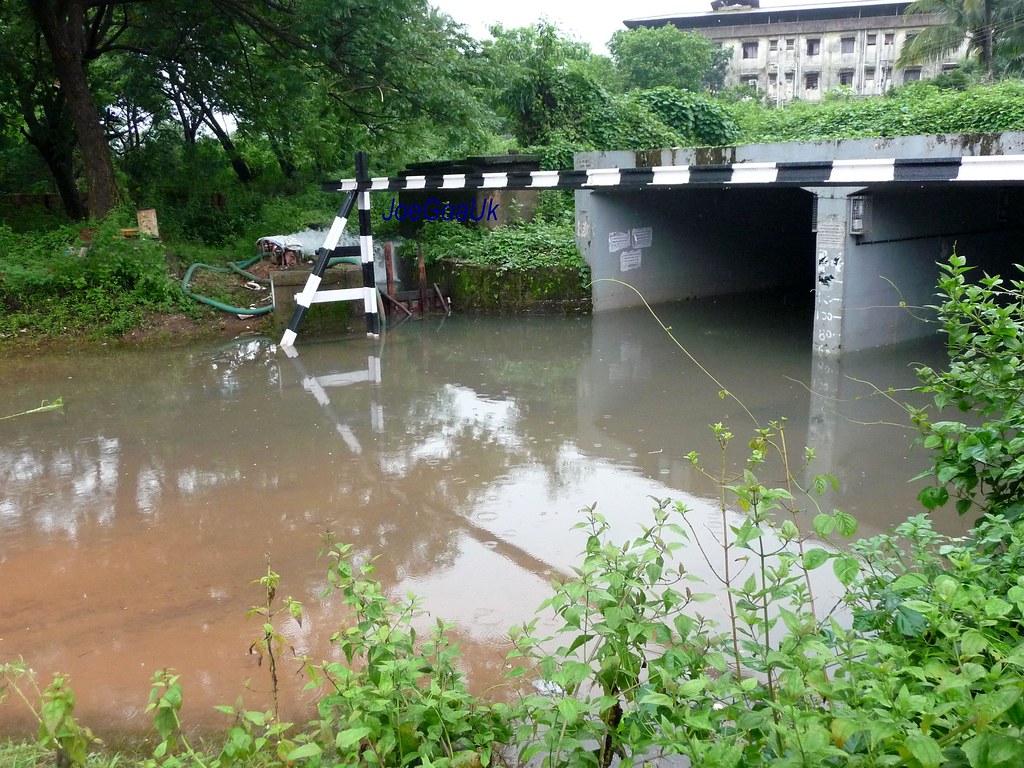In the aftermath, there have been a number of voices raised in protest. Given the feeling of a lack of misgovernance in the State, the Chief Minister Digambar Kamat, and his political establishment has emerged as one of the top favourites in the list of those responsible for this tragedy. There are however, other claimants for this role. There is the fact that the subway that should have been used by the rickshaw that normally dropped Roshni to school was flooded by rainwater. A case of bad and negligent design. There is the fact that the rickshaw driver ought to have dropped his load of school children directly at the school, and not left them to their own devices. There is the fact that the railway crossing across which Roshni ran was not manned and ought to have been.
There is the fact that the subway that should have been used by the rickshaw that normally dropped Roshni to school was flooded by rainwater. A case of bad and negligent design. There is the fact that the rickshaw driver ought to have dropped his load of school children directly at the school, and not left them to their own devices. There is the fact that the railway crossing across which Roshni ran was not manned and ought to have been.
A question that appears to have not been asked is; why was Roshni running across the railway tracks in the first place? Why not wait, peaceably, for the train to pass, and then casually walk to school? The answer, as per some of the newspaper reports, indicate that Roshni was in a hurry to get to school on time. A case of an unusually diligent and conscientious student? I think not.
I am unaware of the disciplinary practices that are favoured at the
This particular practice never made sense to me. Let us ignore the fact that one is humiliating a child for a fact that may be beyond his or her control. As children, we are dropped to school, by our parents, by hired drivers, or we come to school by public transport. Most of these situations are beyond the control of the student. In which case, why punish the child? Perhaps a word with the parents, where we try to understand the reason for this delay?
 The method of punishment that this particular school, that I use as example, adopted was particularly amusing and indicative of what exactly was going on. Granted that the student was late. But if punctuality to ensure that one does not miss the precious drops of wisdom that are being dispensed in the classroom is the point, why hold the child back longer? The point perhaps is that disciplinary practices in school are not about gaining knowledge, but about training students for life once they leave school.
The method of punishment that this particular school, that I use as example, adopted was particularly amusing and indicative of what exactly was going on. Granted that the student was late. But if punctuality to ensure that one does not miss the precious drops of wisdom that are being dispensed in the classroom is the point, why hold the child back longer? The point perhaps is that disciplinary practices in school are not about gaining knowledge, but about training students for life once they leave school. Just as a dog is trained with some harsh treatment as a puppy, we train children for life in general while at school. It becomes necessary then, to run schools as if they were military camps, where we churn out robots for the market.
 The suicide of a student in
The suicide of a student in
Tragedies are always a time when one reflects on the past that brought us to the present condition. While offering a prayer for the soul of Roshni, perhaps we could also ensure a dialogue that prevents schools from being the reasons for the death of innocents?










